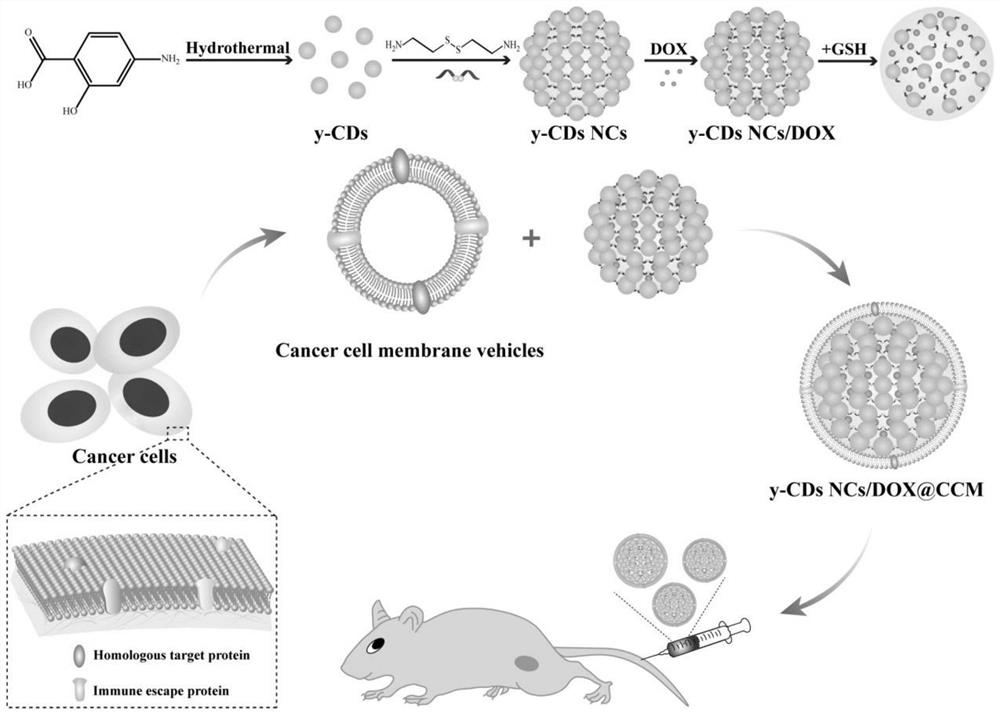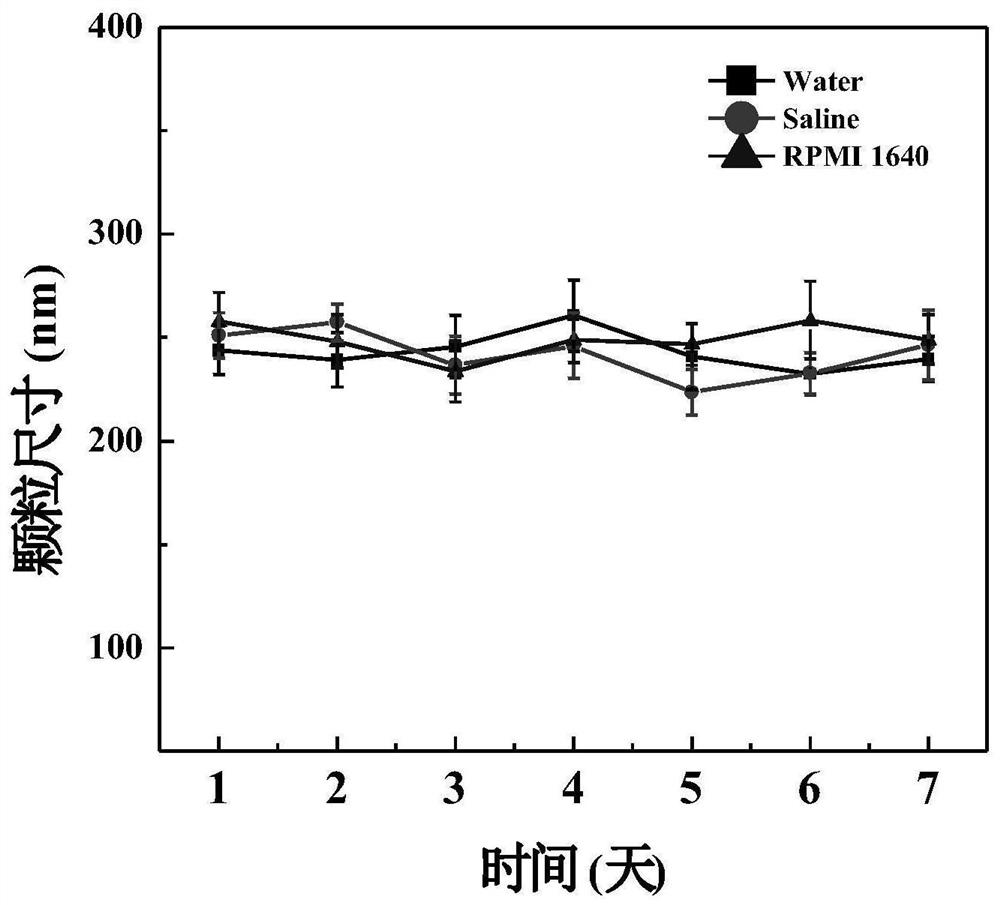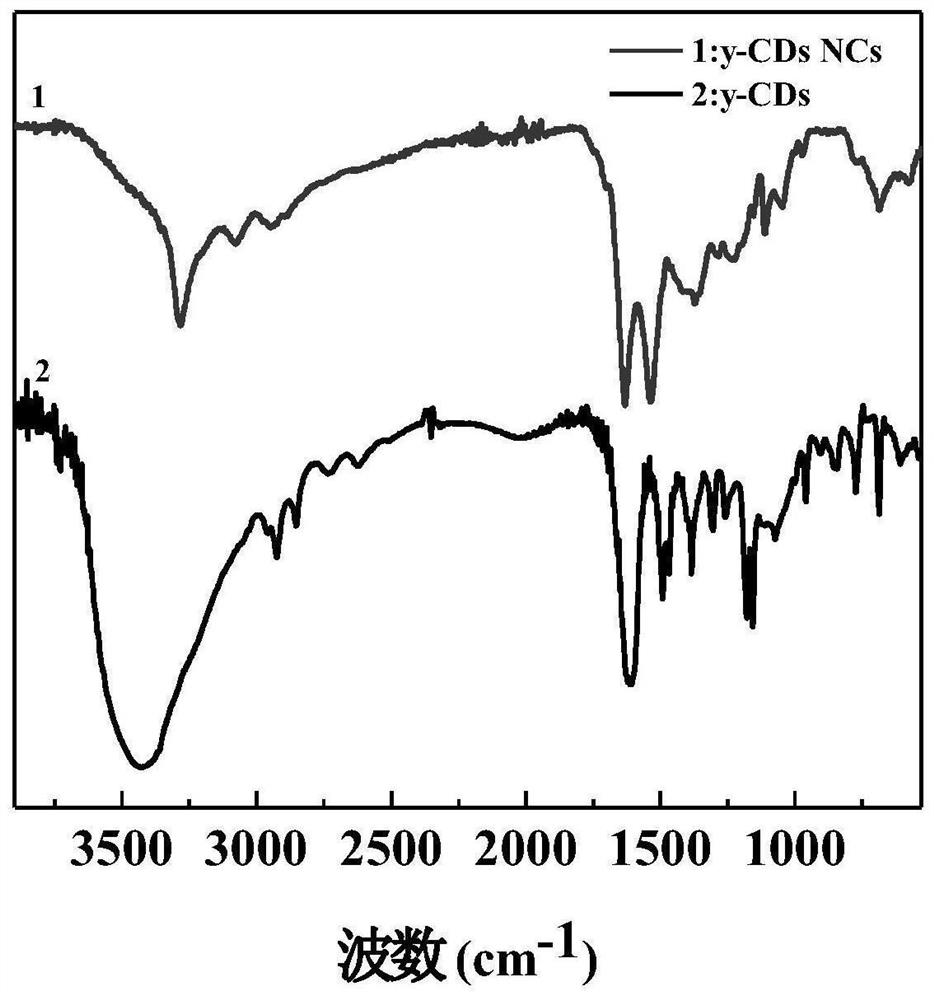Reduction response type carbon dot drug-loaded nanocluster coated with cell membrane, and preparation and application of reduction response type carbon dot drug-loaded nanocluster
A drug-loaded nanometer and nanocluster technology, which can be applied to preparations for in vivo experiments, medical preparations with non-active ingredients, medical preparations containing active ingredients, etc., can solve problems such as poor tumor efficacy
- Summary
- Abstract
- Description
- Claims
- Application Information
AI Technical Summary
Problems solved by technology
Method used
Image
Examples
Embodiment 1
[0077] (1) Dissolve 0.2g of 4-aminosalicylic acid in 10mL of ultrapure water, then transfer the mixed solution to a polytetrafluoroethylene reactor for hydrothermal reaction, the reaction temperature is 180°C, and the reaction time is 3h; After the reaction, it was naturally cooled to room temperature, and the product was centrifuged for 20 min (4000 rpm) to remove excessively carbonized particles, then filtered through a microporous membrane with a pore size of 220 nm, and finally freeze-dried to obtain carbon dot nanoparticles y-CDs.
[0078](2) Dissolve 30mg y-CDs in 15mL ultrapure water, stir at room temperature, add EDC (174mg, 1mL ultrapure water) dropwise to the solution, and after 30min, add NHS (95mg, 1mL ultrapure water) dropwise to the solution water), stirred for 3 h to activate the carboxyl groups on the y-CDs. Subsequently, cystamine dihydrochloride (30 mg, 3 mL ultrapure water) solution was added to the solution, stirred for 3 days, and then dialyzed in ultrapur...
Embodiment 2
[0083] Take 1 mg each of y-CDs, y-CDs NCs / DOX, and y-CDs NCs / DOX@CCM synthesized in Example 1, dilute to 50 μg / mL with ultrapure water, and dissolve 50 μL of y-CDs NCs in 950 μL The ultrapure water was used to measure the surface potential, hydrodynamic diameter and dispersion coefficient. The results are shown in Table 1. The potential of y-CDs is -26.9mV, and the potential of y-CDsNCs obtained by crosslinking y-CDs becomes -4.5mV, the hydrated particle size increased to 236.7nm, the increase in potential and hydrated particle size proved the successful synthesis of y-CDs NCs. When y-CDs NCs were loaded with chemotherapeutic drug DOX, the potential changed from negative to positive and rose to 8.8 mV, which proved the successful loading of DOX. The y-CDs NCs / DOX@CCM obtained by physically extrusion-coating the B16 cell membrane had a potential of -11.7mV, and the hydrated particle size increased to 254.8nm, which proved the successful coating of the cell membrane on the surfa...
Embodiment 3
[0087] Get y-CDs, y-CDs NCs prepared in embodiment 1 and carry out FT-IR characterization, such as image 3 As shown, curve 1 represents y-CDs NCs, and curve 2 represents y-CDs. 3438cm in curve 2 -1 The peak at corresponds to the O-H stretching vibration absorption peak of the carboxyl group, 1606cm -1 The peak at corresponds to the stretching vibration absorption peak of C=O, 1495cm -1 The peak at corresponds to the C-O stretching vibration absorption peak, which proves that the prepared y-CDs have abundant carboxyl groups on the surface. Curve 1, 1631cm -1 and 1535cm -1 The strong absorption peak at belongs to the amide bond produced by the combination of the amino group of cystamine dihydrochloride and the carboxyl group on the surface of y-CDs; 551cm -1 Compared with curve 1, the characteristic peak at is significantly enhanced, which should be attributed to the S-S bond in cystamine dihydrochloride. The infrared spectrogram results proved the successful preparation ...
PUM
 Login to View More
Login to View More Abstract
Description
Claims
Application Information
 Login to View More
Login to View More - R&D
- Intellectual Property
- Life Sciences
- Materials
- Tech Scout
- Unparalleled Data Quality
- Higher Quality Content
- 60% Fewer Hallucinations
Browse by: Latest US Patents, China's latest patents, Technical Efficacy Thesaurus, Application Domain, Technology Topic, Popular Technical Reports.
© 2025 PatSnap. All rights reserved.Legal|Privacy policy|Modern Slavery Act Transparency Statement|Sitemap|About US| Contact US: help@patsnap.com



